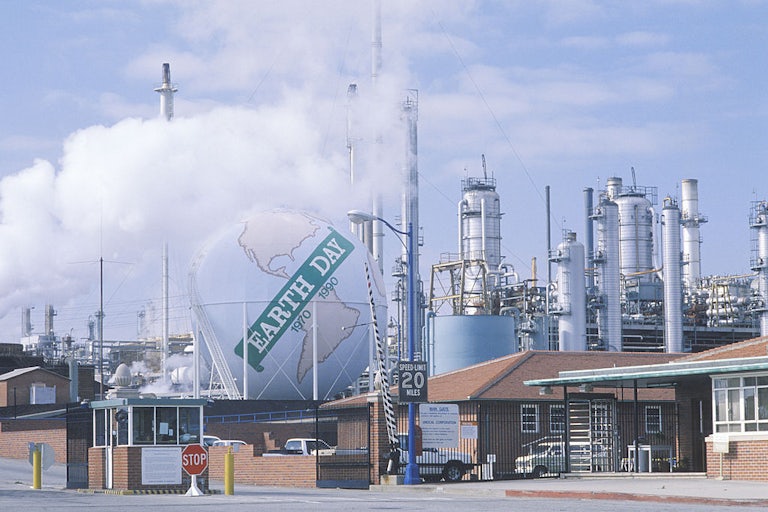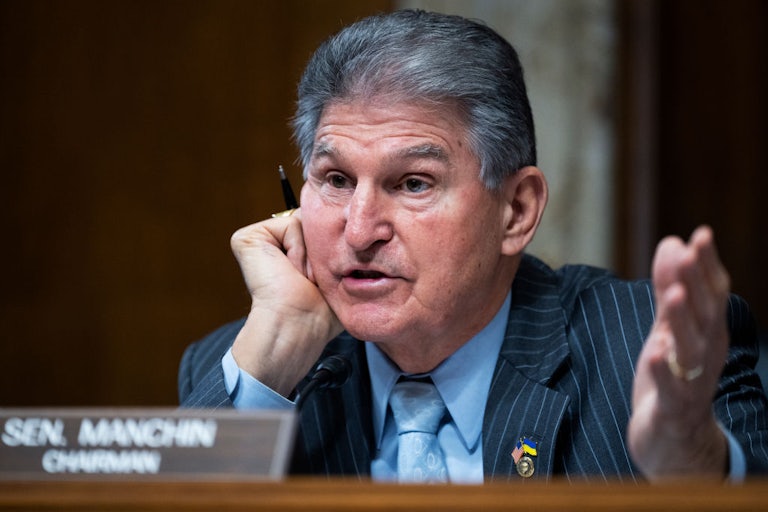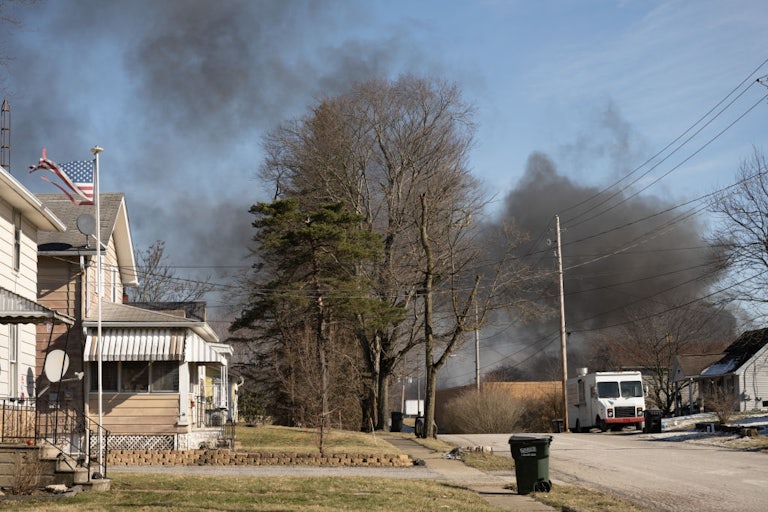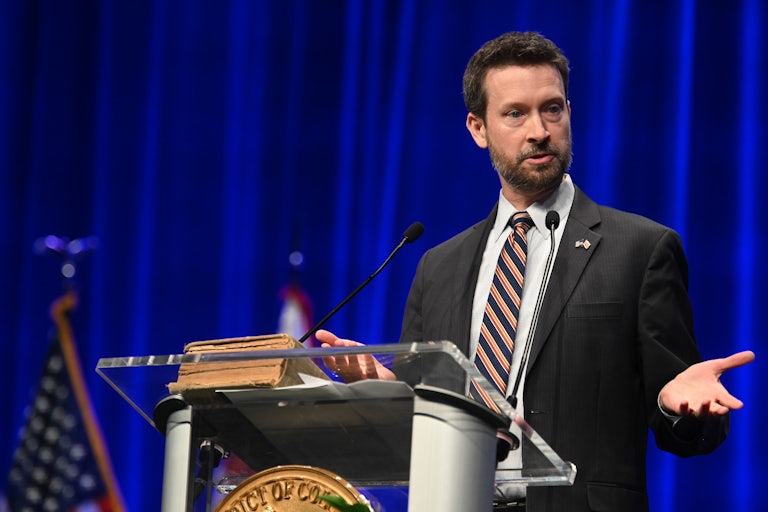The Real Reason Gas Stoves Are Controversial Now
Municipalities have been banning gas hookups for years. There’s a reason the backlash only went national very recently.

The gas stove wars are back: Three Ninth Circuit judges on Monday struck down Berkeley, California’s ban on gas hookups in new buildings. The panel, consisting of one Reagan appointee and two Trump appointees, unanimously overturned a lower court’s decision and sided with the California Restaurant Association, which claims the ban passed in 2019 violates the Federal Energy Policy and Conservation Act. That act stipulates that only the federal government gets to regulate the energy efficiency and energy use of certain products. The Restaurant Association says its members have been hurt by the ban because, it claims, opening a restaurant in Berkeley is harder now.
This probably won’t be the final ruling in this case; the Justice Department filed a brief backing Berkeley, arguing the Restaurant Association misinterprets the FEPCA. But it does represent the latest salvo in what’s become a full-out culture war over gas stoves. And like many culture wars, this one doesn’t seem to make a ton of sense—unless you know where to look.
Whether switching to electric truly hurts restaurants is an interesting question. Despite high up-front costs for induction ranges, some chefs who have made the switch love them, citing both their superior performance and better labor conditions (the kitchen doesn’t heat up as much, and there are fewer burns). The switch can save money over time too. Christopher Galarza, founder of Forward Dining Solutions, told The Washington Post in February, “When you’re able to talk about cost savings and talk about the operational efficiencies and how it’s going to benefit the operations, all of a sudden everyone forgets about gas versus electric and they say, ‘How can I get there?’”
But as the dangers of gas stoves become clearer, the Post noted, “the restaurant business has, by and large, sided with gas.” In November 2022, the National Restaurant Association released an aggressive two-page flier listing an array of alleged problems with using anything other than gas stoves, arguing that banning them would have “little to no effect on climate change overall” and concluding: “Restaurant owners and operators want to be a part of the climate change conversation but banning a reliable and affordable source of energy is a disastrous mistake for the industry.”
It was a striking straw-manning of the anti–gas stove argument—not least because by November, concerns about gas stoves were increasingly focused on their health effects rather than their greenhouse gas emissions. While over four decades of research suggests gas stoves increase kids’ risk of respiratory illness, health concerns reached a noticeable tipping point last October after a widely covered study revealed that gas stoves also leak benzene, a known carcinogen.
This growing awareness eventually led to the goofy fracas that erupted in January, when Bloomberg published a rather sparse and contextless quote from U.S. Consumer Product Safety Commissioner Richard Trumka Jr., who said that “products that can’t be made safe can be banned.” Many on the right went predictably apeshit, vowing to defend their gas stoves with their last breaths against imaginary feds showing up to rip the appliances from the walls.
Why this fervent devotion to gas stoves? And why now, specifically? (After all, Berkeley first banned new hookups in 2019, with some 70 jurisdictions following suit since then!) “Your guess is as good as mine,” wrote TNR’s Alex Shephard as the furor grew. “A few weeks ago, gas stoves were just stoves.”
As TNR explored in a subsequent podcast, there are several reasons that a political divide over gas stoves doesn’t make sense: U.S. households are majority-electric; red states are particularly electric-dominated; and gas stoves, as literary editor Laura Marsh pointed out, are disproportionately associated with liberal “foodie culture” and concentrated in majority-liberal states.
So what is this actually about? In honor of Earth Day on Saturday, TNR is running a weeklong series on environmental culture wars, and I’ll confess I’m partial to something Jan Dutkiewicz and Gabriel Rosenberg wrote while dissecting the growing cult of right-wing meat masculinity.
The fundamental premise of a culture-war framing is that an existing material problem must be seen as a surrogate for a larger clash between two (and only two) irreconcilable views of the world held by two irreconcilable groups of people. Us versus them, elites versus the people, woke versus MAGA, globalists versus purebloods.… The role of the culture warrior is to establish new fronts within this symbolic struggle.… Because the larger struggle is itself vague and irresolvable, this mode of engagement is less about practically addressing the instigating problem than about signaling to adherents how they should feel about the problem’s stubborn irresolution; how it should shore up their opposition to whatever the other side is doing. Culture-war framings are intended not just to polarize but to separate the audience from any material analysis of the problem at hand and the means of fixing it.
Culture-war framings, accordingly, tend to wildly amplify and distort real, less sensational messages. “We should eat less meat” is real. “The elites are going to make cows illegal” is not.
This applies pretty well to the gas stove case. The risk of gas stoves poisoning kids is a material problem. The current culture-war backlash almost inevitably avoids talking about that material problem, instead focusing on in-groups and out-groups. (See Representative Ronny Jackson’s tweet contrasting his own gas stove attachment to “the maniacs in the White House” or Ron DeSantis’s “Don’t tread on Florida” tweet, even though Florida residents overwhelmingly use electric appliances.) The message “Gas stoves have demonstrable health risks, and maybe we should protect people from those” is real. “The feds are coming to pry the stove from your walls” is not.
Jan and Gabriel also pointed out that because these culture wars distract from material problems, they almost inevitably hurt the consumers embroiled in them (the people getting sick from mass-produced meat and stoves) while benefiting the corporations causing the material problem. Although, once started, the culture wars take on a life of their own, industry lobbying can certainly provide a match or opportunistically fan the flames.
With that in mind, the timing and framing of the backlash make a lot more sense. The October report that gas stoves could be leaking a carcinogen considered unsafe at any level is far more threatening to the industry than climate concerns. Consumers might not be motivated to switch their range if this device, like many, many others, is vaguely contributing to the greater problem of climate change. But if this device is hurting them, directly? The National Restaurant Association’s weird pro-gas flier said only 20 percent of consumers supported gas stove bans—data from an early fall Morning Consult poll before the benzene study came out. By January, that support was up to 42 percent of all adult-age Americans, and 56 percent of Democrats. And progressive pollsters at Data for Progress found consumer interest in switching to electric increases further after respondents are informed about health risks.
While the politicians who tweeted inflammatory misinformation about the federal government coming to take people’s stoves don’t live in majority-gas-stove states, they do receive big donations from the fossil fuel industry. Democratic Senator Joe Manchin, who implied on Twitter that his gas stove was his family’s most prized possession, was the top senatorial recipient of oil and gas money in 2022. Republican Senator Ted Cruz, who along with Manchin later introduced the baffling Gas Stove Protection and Freedom Act (to block a gas stove ban that doesn’t seem to have been on the table), won that honor in 2018.
The gas stove culture wars are like a lot of other cultural divides in American life, it turns out. If you want to understand who’s fueling them, follow the money.
Stat of the Week
$500 billion
That’s the average value produced by the world’s kelp forests per year, according to a new estimate published in Nature Communications. The breakdown is just as striking: Their contribution to fisheries averages over $12,000 per acre of kelp forest per year, and in total they sequester 4.91 megatons of carbon per year.
Elsewhere in the Ecosystem
A Republican bill in Texas proposes to fine residents “if they make three or more complaints to environmental regulators in a calendar year and their complaints don’t result in an enforcement action.” The Texas Commission on Environmental Quality would be tasked with carrying this out. Environmental advocates say this will intimidate people out of filing complaints. And that’s not the only problem:
Tim Doty, an independent environmental consultant and former TCEQ air monitoring employee, said responding to citizen complaints is part of the agency’s job: “Just because it doesn’t lead to an enforcement action doesn’t mean your complaint is not valid.”
Doty said residents often file multiple complaints because TCEQ typically takes weeks or months to resolve investigations.
Doty said it can take TCEQ weeks just to send an investigator to check out a complaint, and by then the problem may have disappeared or changed. If Springer’s bill becomes law, that situation would result in a strike against the complaining person, even though the problem they reported may have been a violation had the agency responded faster.
Read Alejandra Martinez’s and Martha Pskowski’s report at Inside Climate News.
This article first appeared in Apocalypse Soon, a weekly TNR newsletter authored by deputy editor Heather Souvaine Horn. Sign up here.


.png)

.png)

.png)

.png)

.png)


.png)

.png)